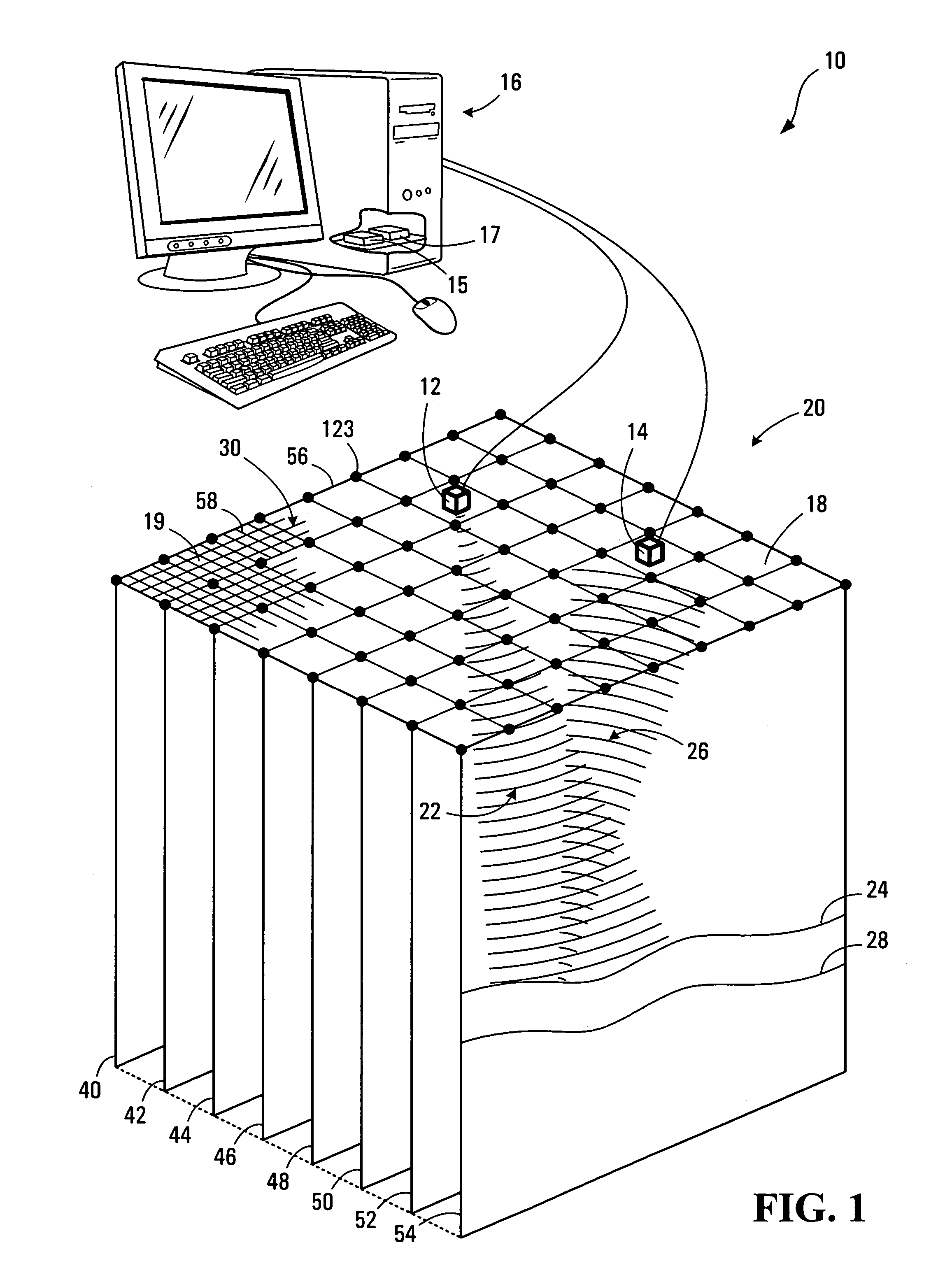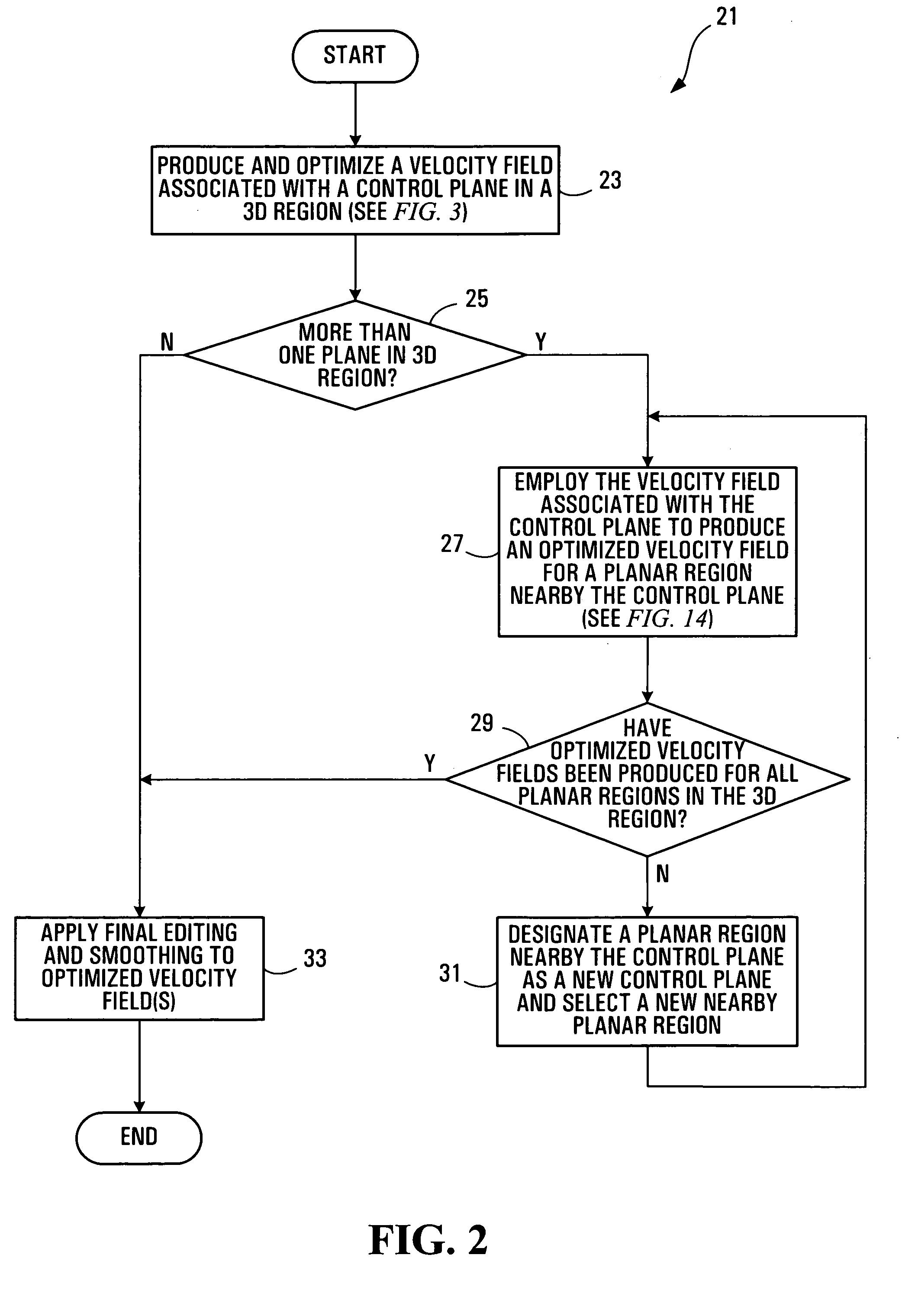Method, media, and signals for processing seismic data to obtain a velocity field
a technology of seismic data and velocity field, applied in the field of processing seismic data to obtain a velocity field, can solve the problems of computational cost, instability, and less than accurate velocity estimates
- Summary
- Abstract
- Description
- Claims
- Application Information
AI Technical Summary
Benefits of technology
Problems solved by technology
Method used
Image
Examples
Embodiment Construction
[0346]Referring to FIG. 1, a system according to a first embodiment of the invention is shown generally at 10. The system 10 includes a source 12 of seismic energy and at least one seismic receiver 14 in communication with a computer 16. When used on land, the seismic source 12 can be a high explosive charge electrically detonated in a borehole located at a selected point on a terrain 18 on the surface 20 of the earth, or another energy source having capacity for delivering a series of impacts or mechanical vibrations to the earth's surface 20, for example. An incident seismic wave 22 is generated in the earth's subsurface by the source 12 and is partially reflected back to the surface 20 from strata interfaces 24 and 28 as seismic reflections 26. These seismic reflections 26 reach different locations on the surface 20 of the earth at different times, depending on the distance and velocity characteristics of the subsurface traversed. The seismic receiver 14 is used to produce an ele...
PUM
 Login to View More
Login to View More Abstract
Description
Claims
Application Information
 Login to View More
Login to View More - R&D
- Intellectual Property
- Life Sciences
- Materials
- Tech Scout
- Unparalleled Data Quality
- Higher Quality Content
- 60% Fewer Hallucinations
Browse by: Latest US Patents, China's latest patents, Technical Efficacy Thesaurus, Application Domain, Technology Topic, Popular Technical Reports.
© 2025 PatSnap. All rights reserved.Legal|Privacy policy|Modern Slavery Act Transparency Statement|Sitemap|About US| Contact US: help@patsnap.com



